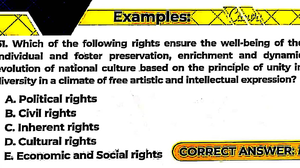- Information
- AI Chat
Was this document helpful?
ACC 156 SAS 7 - concept notes and activities with answer keys
Course: Accounting (ACC 156)
180 Documents
Students shared 180 documents in this course
University: University of Iloilo - PHINMA
Was this document helpful?

ACC 156: Managing Information and Technology
Module #7 Student Activity Sheet
Name: _________________________________________________________________
Section: ____________ Schedule: ________________________________________
Class number: _______
Date: ________________
This document is the property of PHINMA EDUCATION
Lesson title: IT Infrastructure
Lesson Targets:
At the end of this module, I should be able to:
1. Know the requirements for IT Infrastructure
2. Understand the components that supports the IS
Materials:
Student Activity Sheets
References:
www.ionos.com/digitalguide
A. LESSON PREVIEW/REVIEW
Introduction
GREAT! Are you excited? for our new topic for today? Let’s just have a review with our previous
lesson. Can you write down here our “Did you Know?” last session.
ANSWER:
B. MAIN LESSON
Content Notes
Components of Information Systems
The main components of information systems are computer
hardware and software, telecommunications, databases and
data warehouses, human resources, and procedures. The
hardware, software, and telecommunications constitute
information technology (IT), which is now ingrained in the
operations and management of organizations.
Computer software
Computer software falls into two broad classes: system
software and application software. The principal system
software is the operating system. It manages the hardware,
data and program files, and other system resources and
provides means for the user to control the computer, generally
via a graphical user interface (GUI). Application software is
programs designed to handle specific tasks for
users. Smartphone apps became a common way for
individuals to access information systems.
Students also viewed
- ACC 156 SAS 5 - concept notes and activities with answer keys
- ACC 156 SAS 3 - concept notes and activities with answer keys
- ACC 156 SAS 4 - concept notes and activities with answer keys
- ACC 156 SAS 2 - concept notes and activities with answer keys
- AT-96-PW - Auditing theory
- QUIZ Chapter-9 Consignment- Sales 2020- Edition





